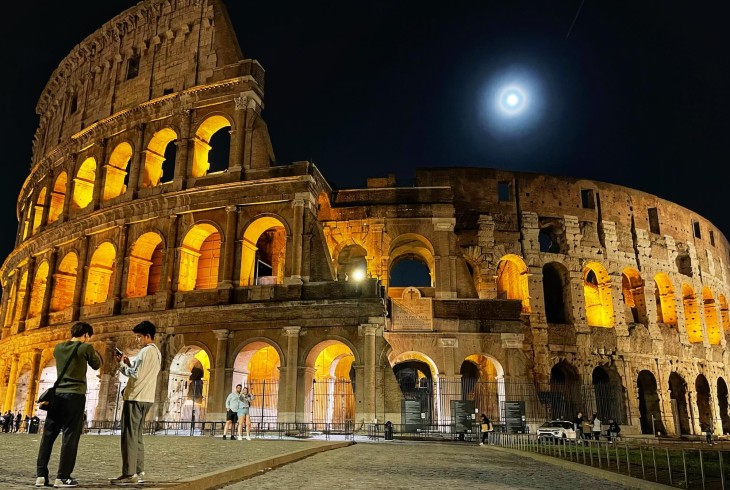If you enjoy our free guide to taking great night photos in Rome or if you’re planning a visit to Rome and fancy visiting the landmarks featured in our article in the company of an expert local guide after dark, then check out our Rome at Twilight walking tour and Rome Night Tour by Car.
There are few sights in the world as inspiring as the streets of Rome when the city sleeps. As the sun sets over the Eternal City and the historic center is plunged into darkness, it changes. Streets and monuments that were bleached white in blinding sunshine only hours before all of a sudden take on a totally different character. Rome at night is a quieter and yet more dramatic place, a timeless world of light and dark that seems to be drawn straight from the panels and canvases of Caravaggio.
Needless to say, the sight of the city's iconic monuments bathed in moonlight as stars twinkle down from on high is a truly jaw-dropping spectacle, and it's a landscape tailor-made for photographers. So grab your gear - anything from a top of the line SLR to whatever camera phone you've got handily nestled in your pocket will do, and follow us to discover the best places to take perfect night photos when visiting Rome !
The Pantheon
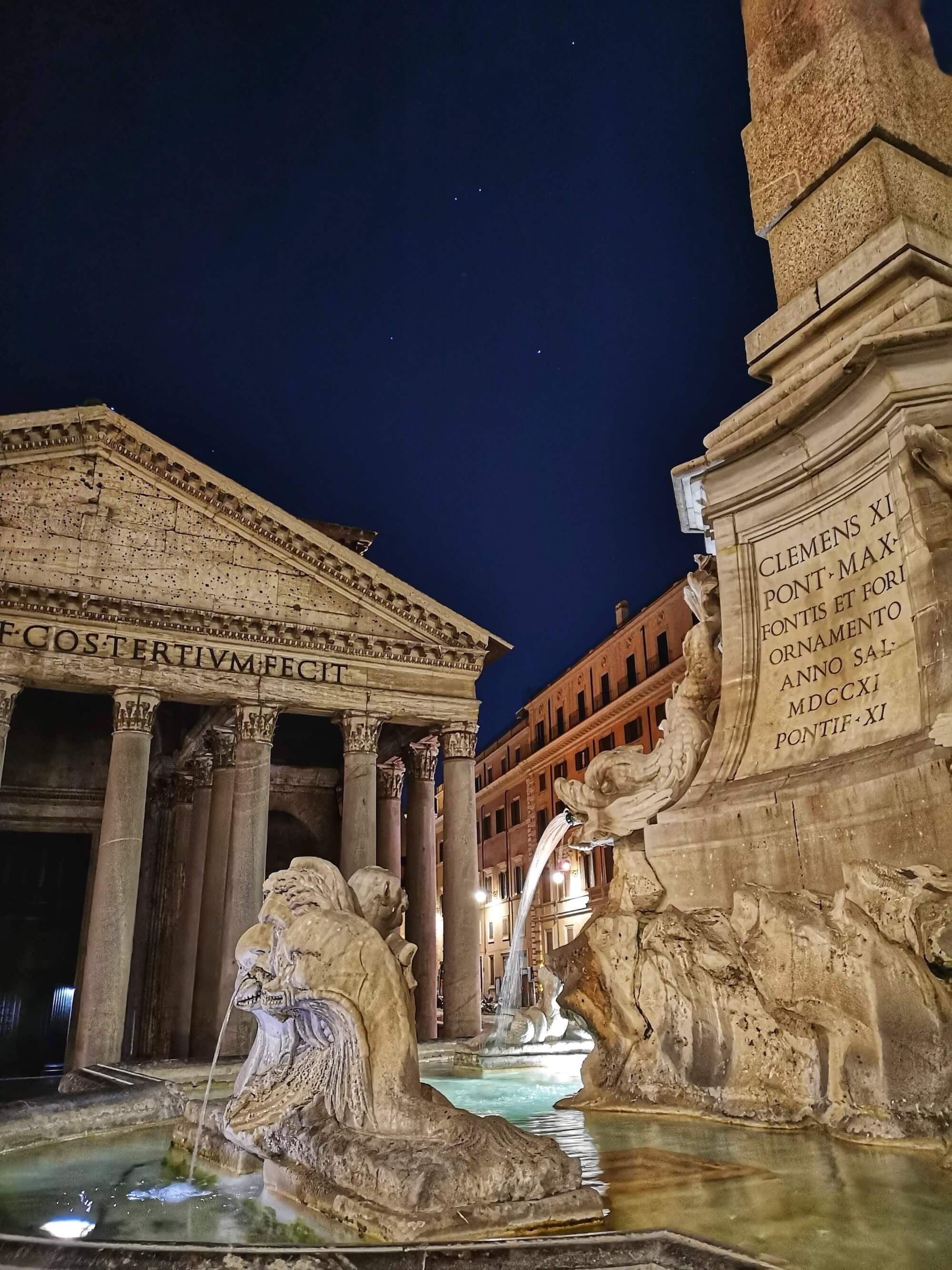
Dominating Piazza della Rotonda, ancient Rome's spectacular temple to all the gods looks too good to be true in the dead of night when most tourists are tucked up in bed. No matter how many times we have strolled past the awe-inspiring Pantheon spectacularly illuminated after midnight, no matter if we are cold or tired, or desperate to get to bed, each time we're forced to stop a moment to gaze up at those massive columns dense with history. Come late enough and you'll be able to enjoy the timeless display with only the sound of the gushing waters of Giacomo della Porta's 16th century fountain for company.
The Colosseum
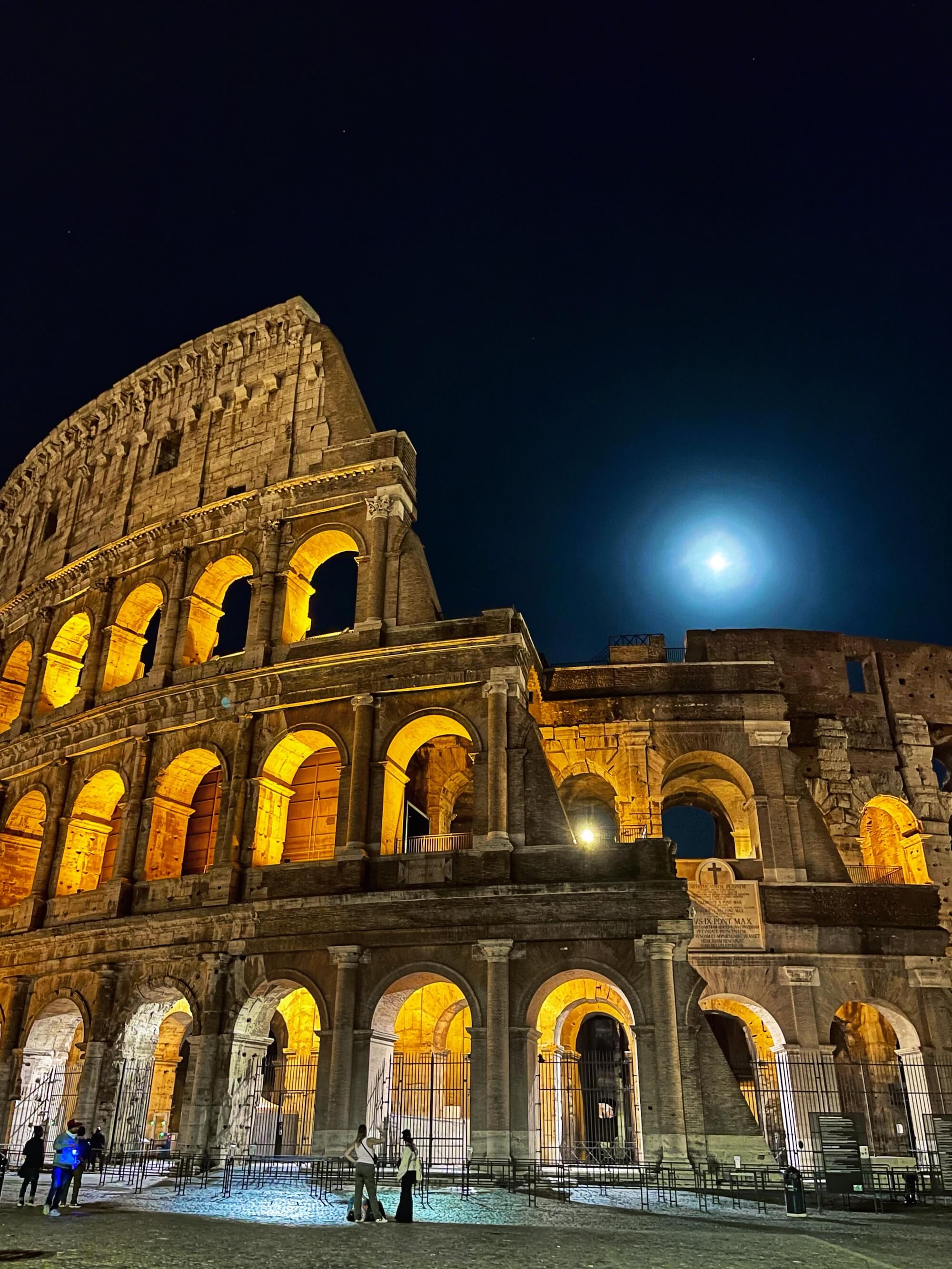
The soaring bulk of ancient Rome's most iconic building never fails to impress at any time of the day or night, but there's something uniquely magical about the endless rows of arches illuminated by a golden glow after night falls on the Eternal City. In ancient times the area around the Colosseum was a dangerous place to be after nightfall, a stage set for dodgy deals, crimes and forbidden affairs. In the 18th century meanwhile, Enlightenment poets and philosophers rambled amidst the ruins with magical visions of the classical world dancing in their heads. These days the open space in front of the ancient amphitheater is a haven for photographers, who will be sure to appreciate the spectacularly theatrical sight of the Colosseum impressively spotlit in the darkness. You can also explore inside the amphitheater after-hours on a special Colosseum night tour .
The Trevi Fountain
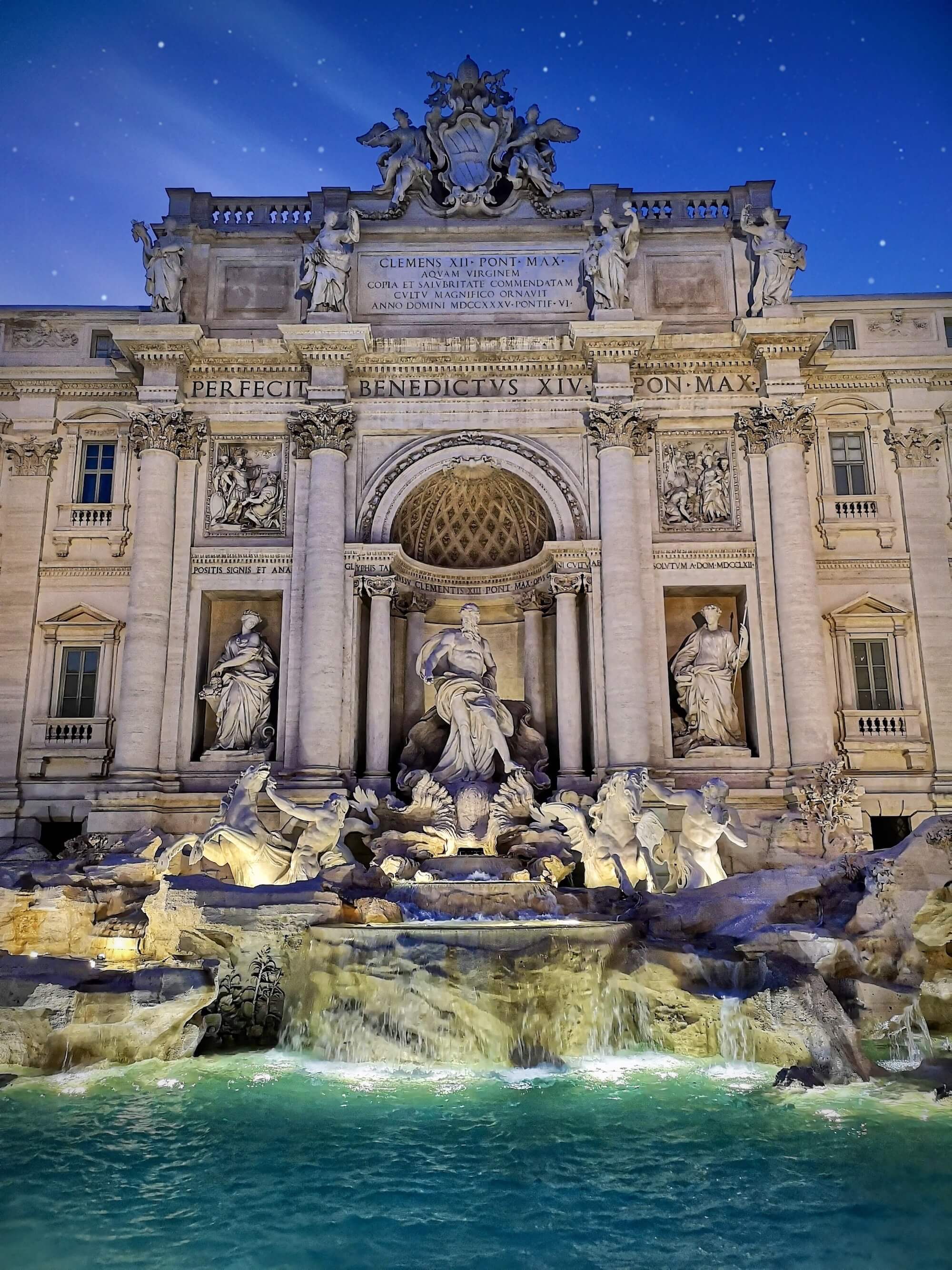
"It was a delight to behold this untameable water, sporting by itself in the moonshine..." We agree with the great American author Nathaniel Hawthorne: few things can compare to the experience of stumbling across the wild rushing waters of the Trevi Fountain in the depths of the Roman night. It's easy to be disappointed by the Trevi during the day - the crowds that throng the fountain are often overwhelming, and you can forget about taking any tourist-free photographs of the monument. All that changes in the wee hours, when you can get up close and personal with Nicola Salvi's flamboyant design without having to use your elbows. Better still, a recent renovation has ensured that the fountain is beautifully illuminated after dusk , throwing sharper relief on one of the city's best-loved spots .
Piazza Navona

Whether you intend it or not, all night walks in the Eternal City will eventually lead you to Piazza Navona. The beating heart of Rome, this ancient racetrack turned sweeping public square offers up a beguiling mix of monumental fountains and soaring churches that neatly encapsulates the unique beauty of the Italian capital. It goes without saying that photographs of the piazza, particularly those that foreground Gianlorenzo Bernini's epic Fountain of the Four Rivers rushing and gurgling in the tranquil surroundings of the Roman night, tend to be winners.
St. Peter's Square
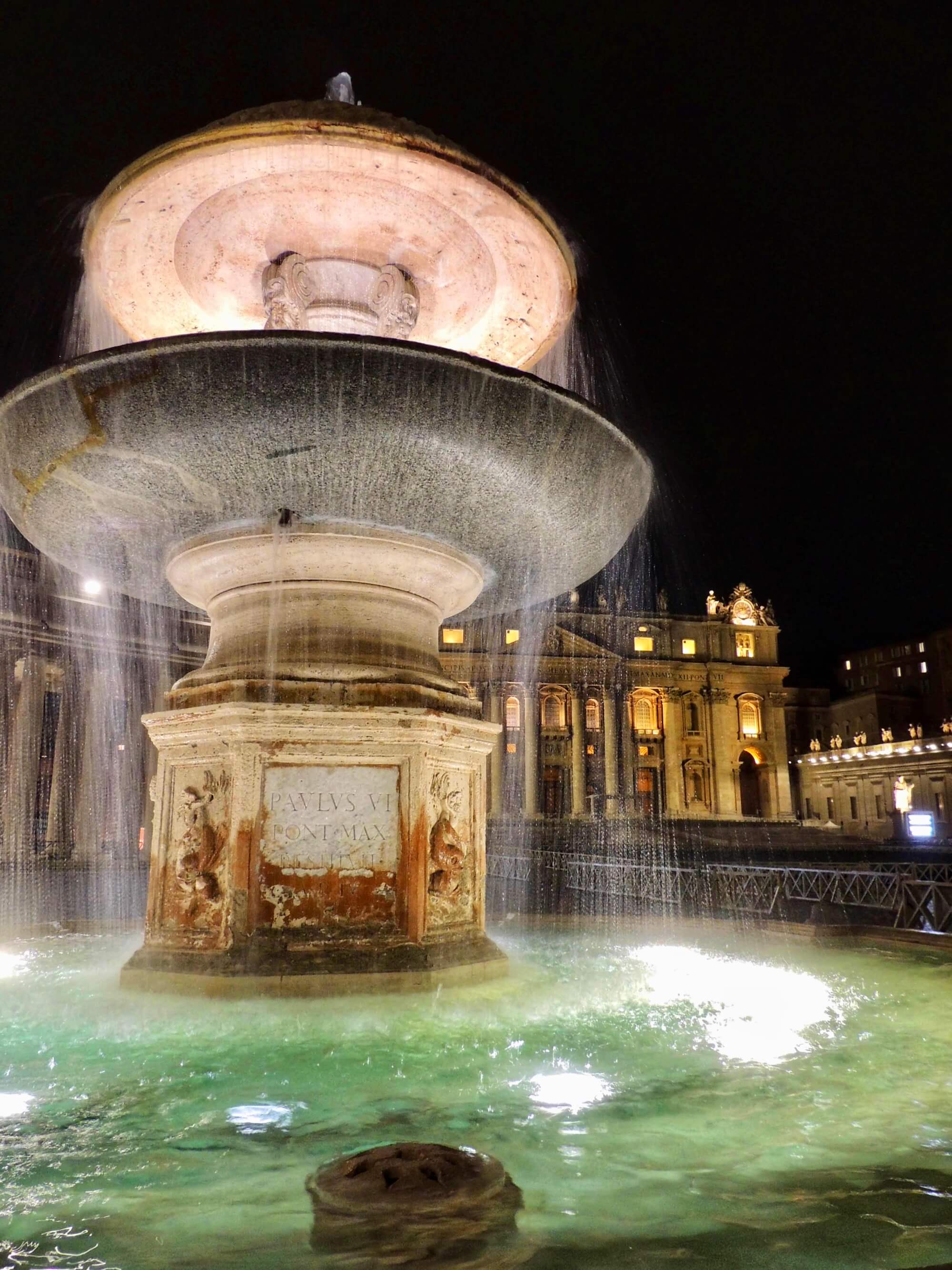
During the day St. Peter's Square is a hive of activity, with tourists, pilgrims and prelates jostling for position in the Bernini-designed square at the heart of the Catholic world. But as dusk falls and the venerable basilica closes its doors, just like that the day trippers melt away into the bustle of the surrounding city in search of new adventures. It's then that the seagulls descend, screeching and swooping and bathing in the magnificent Renaissance fountains that spew a perpetual font of water high into the Roman sky. It can be an almost eerie experience wandering around the deserted piazza in the shadow of the world's greatest church, but it offers a wonderful opportunity for some seriously atmospheric photographs. You can also visit the Vatican Museums at night, when the collections look their absolute best:
The Spanish Steps
 It's not often that you'll have the Spanish Steps all to yourself, but if you take a very late night stroll down to Piazza di Spagna you might just be lucky enough to be able to admire the stunning Baroque ensemble in total peace. Pietro Bernini's fountain (sculpted with just a little help from his preternaturally gifted son Gianlorenzo) provides the by-now expected liquid soundtrack to the elegant staircase that ripples its way up the hill towards the church of Santa Trinità dei Monti.
It's not often that you'll have the Spanish Steps all to yourself, but if you take a very late night stroll down to Piazza di Spagna you might just be lucky enough to be able to admire the stunning Baroque ensemble in total peace. Pietro Bernini's fountain (sculpted with just a little help from his preternaturally gifted son Gianlorenzo) provides the by-now expected liquid soundtrack to the elegant staircase that ripples its way up the hill towards the church of Santa Trinità dei Monti.
The Forum of Augustus
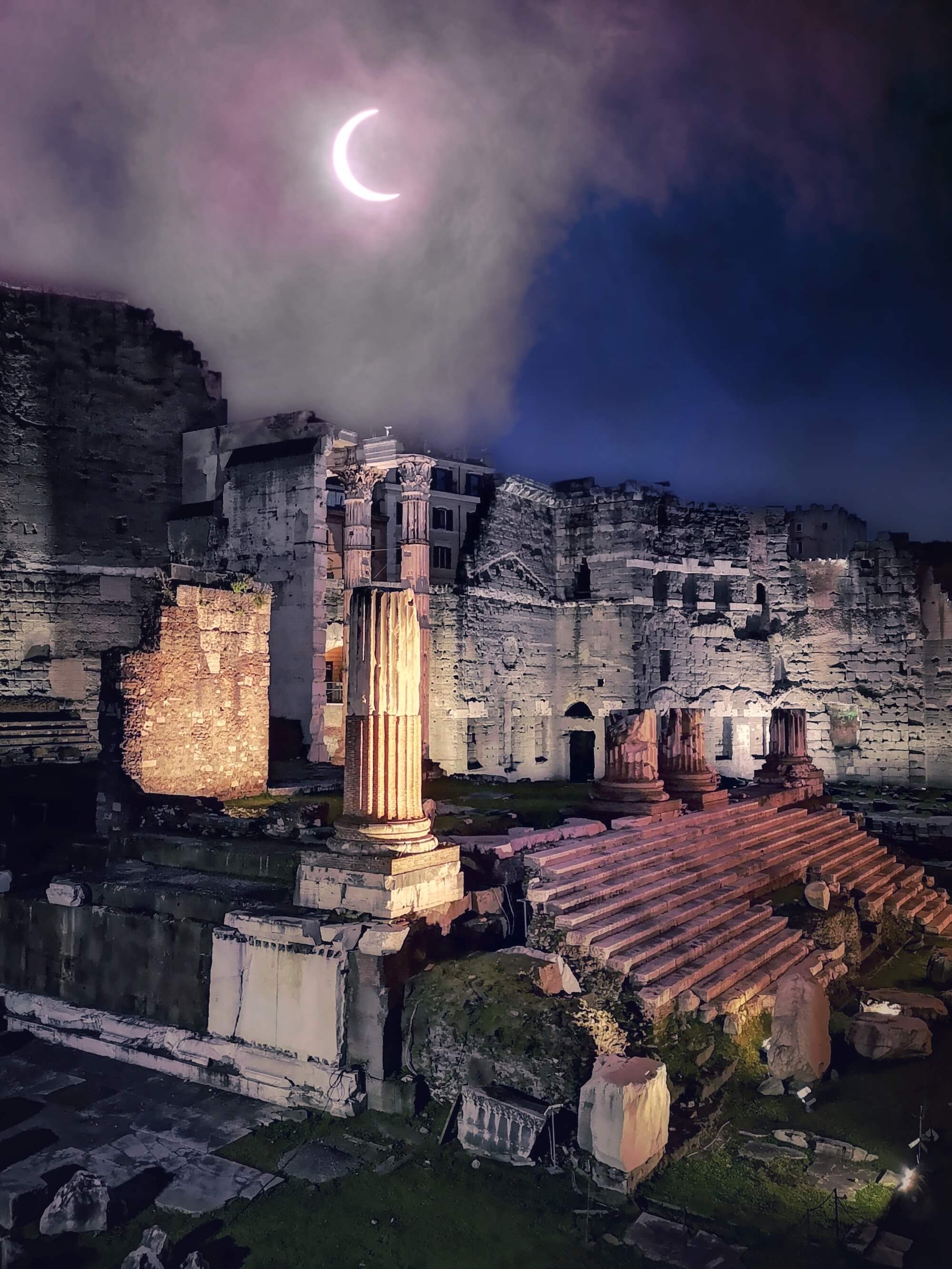
When Augustus rose to power in the wake of Julius Caesar's assassination, he wasted little time in expressing his status as Rome's first citizen via magnificent architectural projects. One of the most impressive was the Forum of Augustus, a massive public space that included a temple to Mars as well as spaces for meetings of the Senate, business dealings, displays of triumphal insignia, a hall housing a massive sculpture of the emperor himself, and much more. Today the evocative ruins cut a real dash on panoramic Via dei Fori Imperiali, and provide a fitting legacy to the man who famously boasted he had "found Rome a city of bricks and left it a city of marble.”
Trajan’s Market
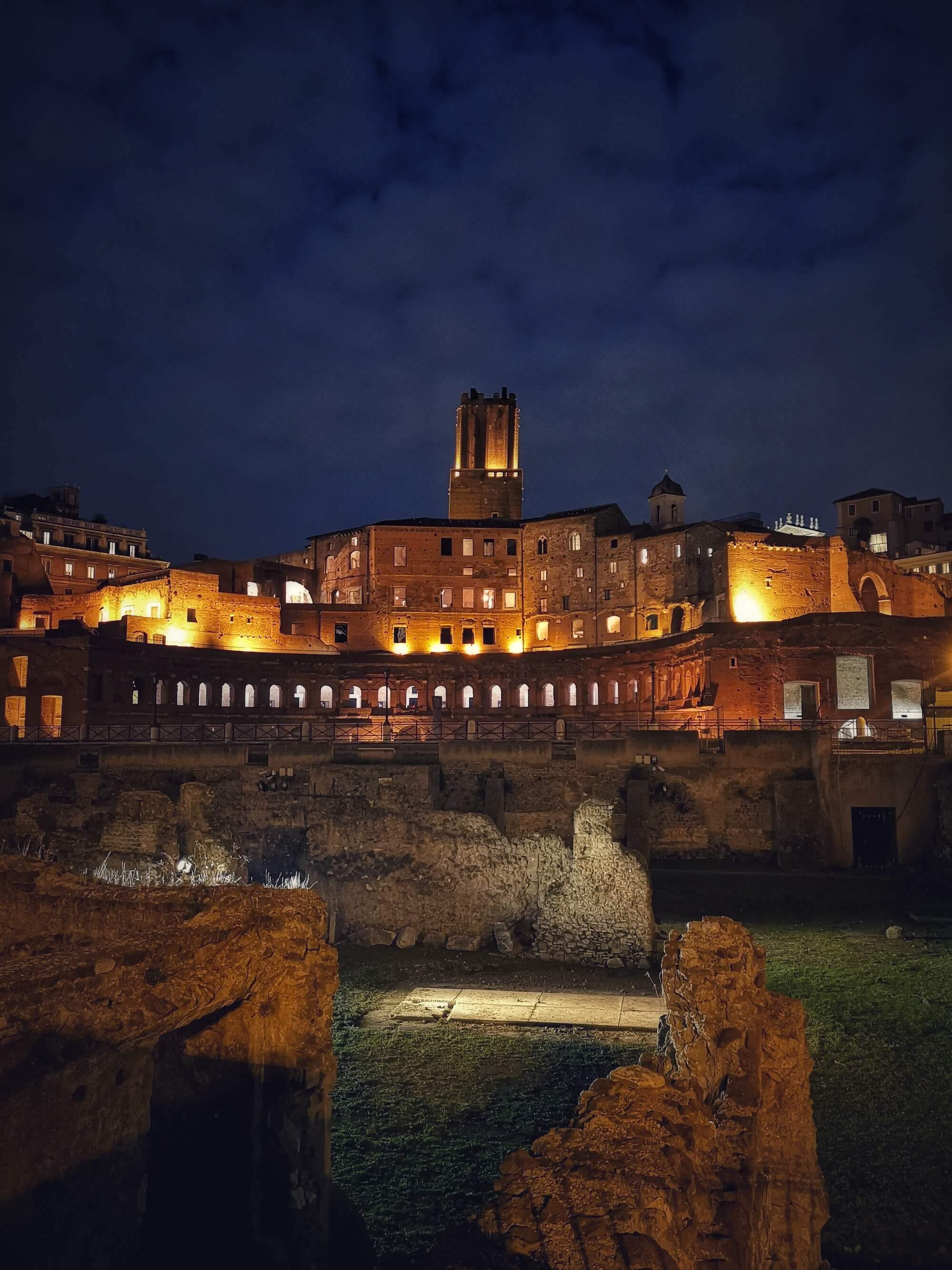
There is something uniquely captivating about the sight of the massive ancient market of Trajan gleaming majestically in the Roman night. This huge and curving multi-level commercial complex was built into the side of the Quirinal hill by the architect Apollodorus of Damascus on the orders of the emperor Trajan in c112 AD. Rising above the market is the forbidding medieval Torre delle Milizie, whilst the remains of Trajan's forum, the last and largest of the Imperial forums built by the first generations of Roman emperors, are in the foreground. Described by an ancient contemporary as 'a construction unique under the heavens,' these days the stunningly lit ruins make for a great place to contemplate the beauty of the ancient city in the peace of an enveloping night.
Ponte Garibaldi

The river Tiber makes for a more than willing subject for night time portraits in the Eternal City, and looks great from viewpoints along all of the bridges that ford its rushing waters. But we think that the view from from Ponte Garibaldi, taking in the beautiful form of the Renaissance Ponte Sisto - with its immediately recognisable oculus - and onwards towards Michelangelo’s spectacular dome of St. Peter’s basilica, brilliantly illuminated in the darkness, is hard to beat!
Coppedè

With its wealth of eccentric architectural details, quirky Coppedè is a great neighbourhood in Rome for photography enthusiasts. We owe the enchanting art deco charms of the quarter entirely to architect Gino Coppedè, who was commissioned to design an upscale new residential quarter for wealthy families here in the 1920s. And whilst it’s busy during the day thanks to the numerous offices nearby, at night the quarter almost feels like an open-air museum that you can wander around at will. Grab your Nikon, start exploring and get creative framing the wacky palaces and fountains that make the Coppedè area unique in the city!
Ponte Sant’Angelo
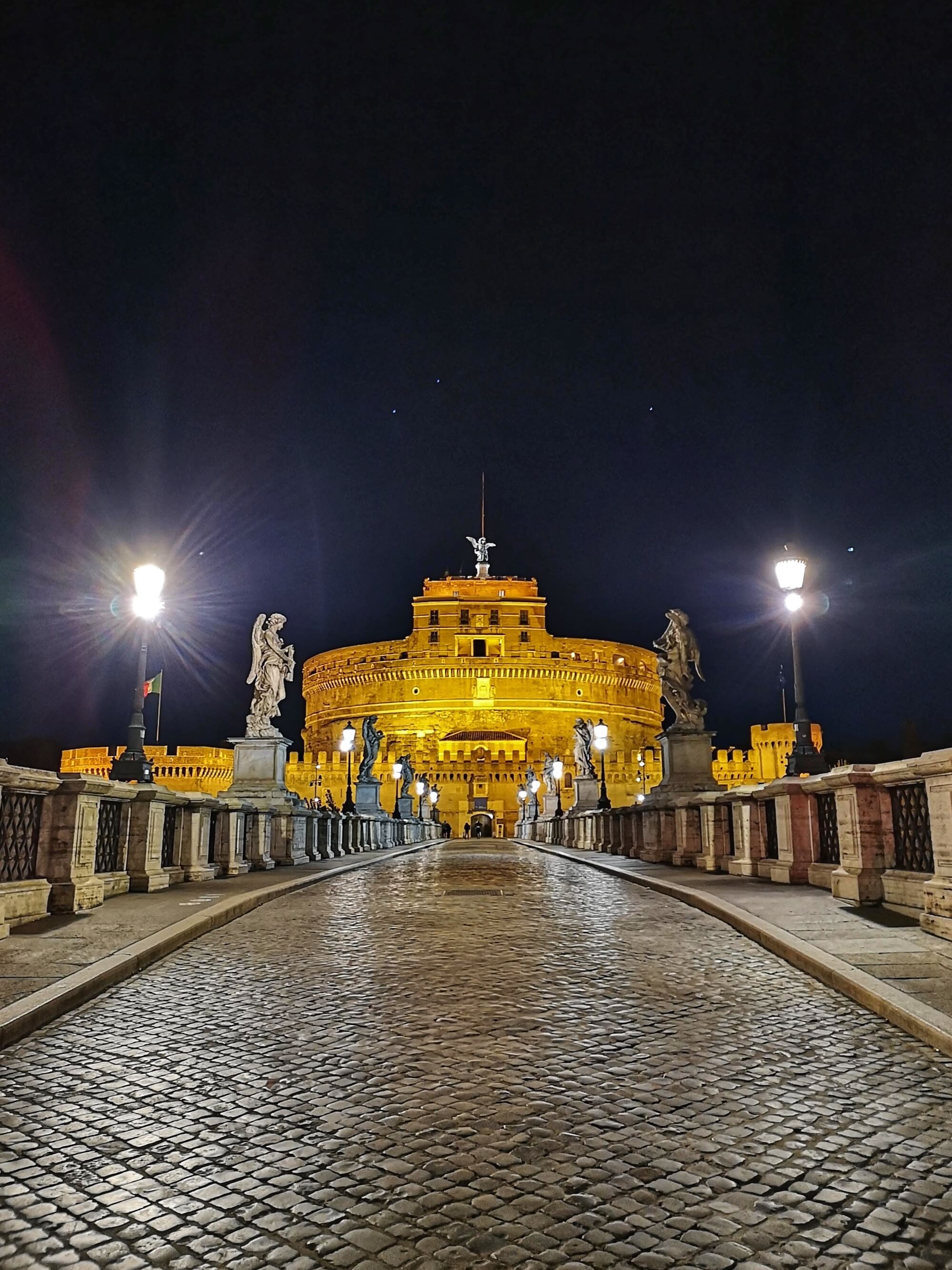
The only figures abroad late at night on Rome's Ponte Sant'Angelo are the magnificent marble angels carved by Gianlorenzo Bernini that stand silently watch over the bridge. The river crossing leads to Castel Sant'Angelo: once the extraordinary mausoleum of the ancient emperor Hadrian, with the passage of time it eventually was used variously as a fortress, prison and Papal hideout - connected to the Vatican by a secret passage, Pope Clement VII escaped from the besieged Papal palaces during the 1527 sack of Rome and holed up here as the northern troops of Emperor Charles V laid waste to the city. Head to the bridge late at night with camera in hand and you'll be doing more than taking great photographs - you'll be capturing history.
We hope you enjoyed our guide to taking great night photos in Rome! If you're planning a visit to Rome and fancy visiting the landmarks featured in our article in the company of an expert local guide after dark, then check out our Rome at Twilight walking tour and Rome Night Tour by Car .
